Introduction to policy gradient
Deep Reinforcement Learning in Python

Timothée Carayol
Principal Machine Learning Engineer, Komment
Introduction to Policy methods in DRL
Q-learning:
- Learn the action value function Q
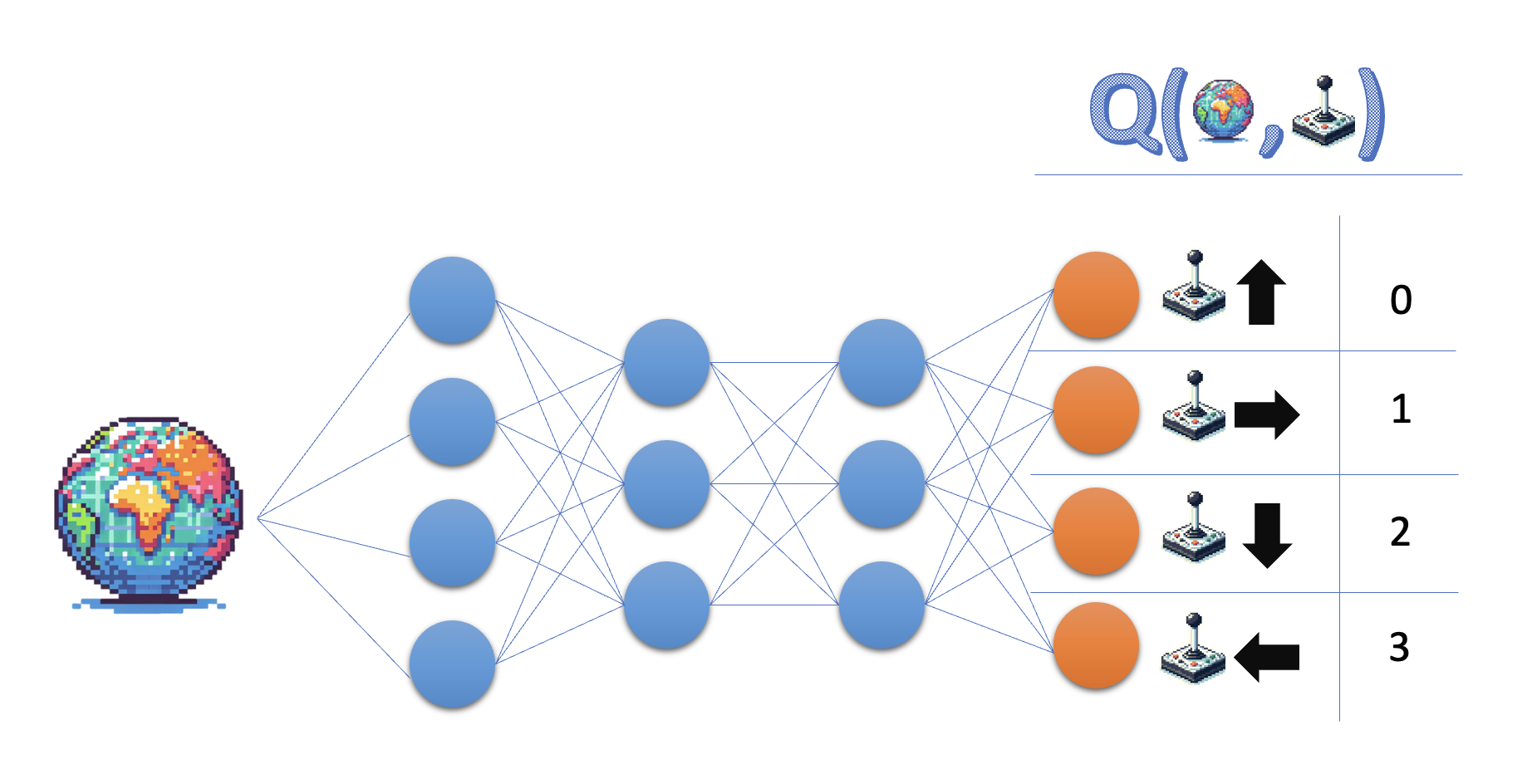
- Policy: select action with highest value
Policy learning:
- Learn the policy directly
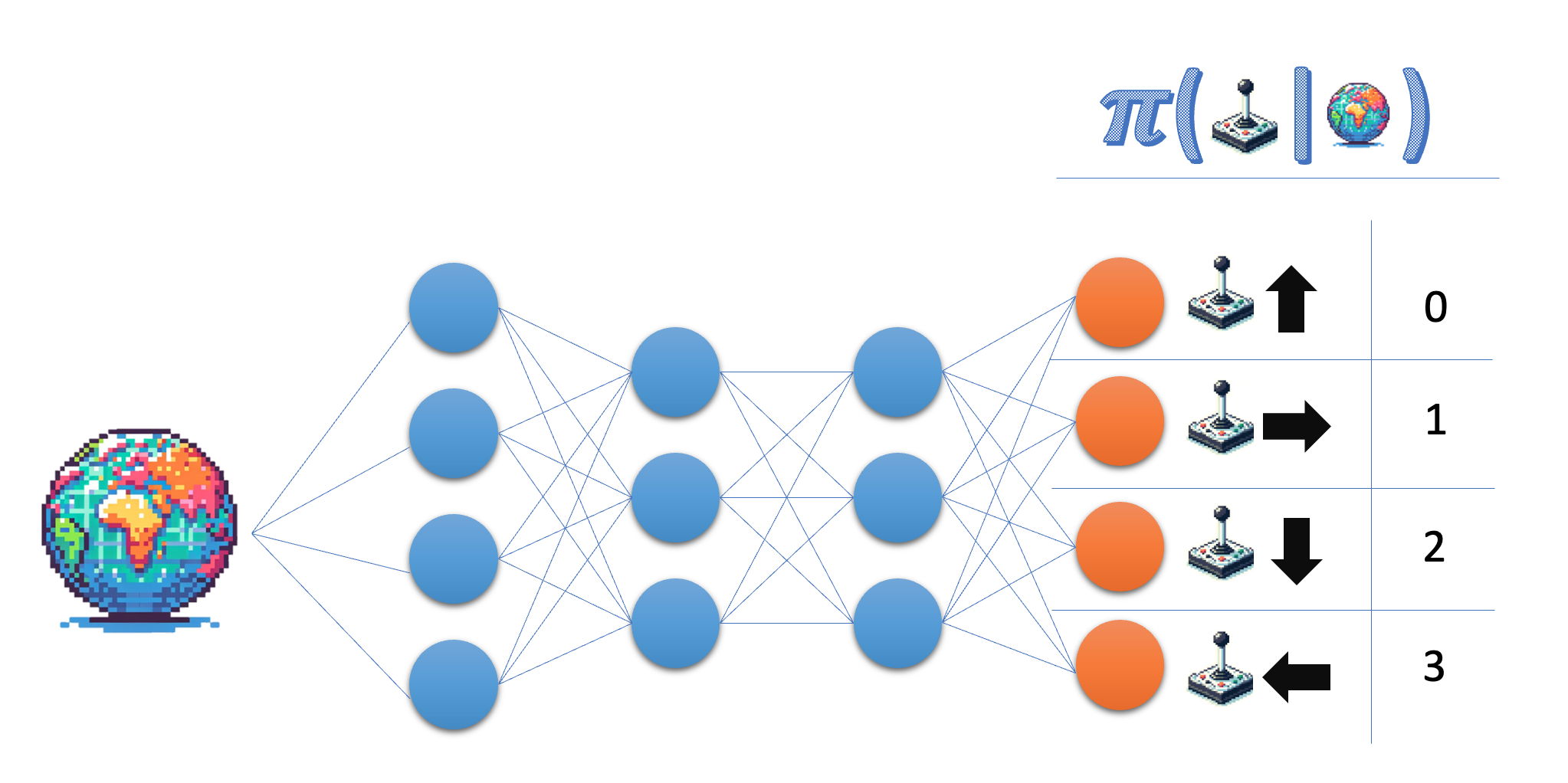
Policy learning
- Can be stochastic
- Handle continuous spaces
- Directly optimize for the objective
- High variance
- Less sample efficient
- In Deep-Q learning: policies are deterministic
$\pi_\theta(a_t | s_t)$:
- Probability distribution for $a_t$ in state $s_t$, with:
- $a_t$, $s_t$: action and state at step $t$
- $\theta$: policy parameters (network weights)
The policy network (discrete actions)
class PolicyNetwork(nn.Module): def __init__(self, state_size, action_size): super(PolicyNetwork, self).__init__() self.fc1 = nn.Linear(state_size, 64) self.fc2 = nn.Linear(64, 64) self.fc3 = nn.Linear(64, action_size) def forward(self, state): x = torch.relu(self.fc1(torch.tensor(state))) x = torch.relu(self.fc2(x)) action_probs = torch.softmax(self.fc3(x), dim=-1) return action_probsaction_probs = policy_network(state) print('Action probabilities:', action_probs)
Action probabilities: tensor([0.21, 0.02, 0.74, 0.03])

action_dist = ( torch.distributions.Categorical(action_probs))action = action_dist.sample()
The objective function
Policy must maximize expected returns
- Assuming the agent follows $\pi_\theta$
- By optimizing policy parameter $\theta$
Objective function:
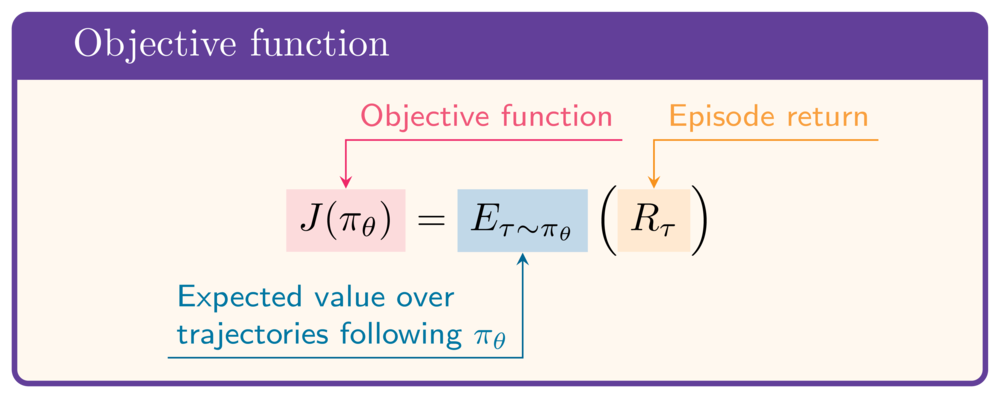
- To maximize $J$: need gradient with respect to $\theta$:

The objective function
Policy must maximize expected returns
- Assuming the agent follows $\pi_\theta$
- By optimizing policy parameter $\theta$
Objective function:

- To maximize $J$: need gradient with respect to $\theta$:

The policy gradient theorem
- Gives a tractable expression for $\nabla_\theta J(\pi_\theta)$
- Expectation over trajectories following $\pi_\theta$
- Collect trajectories and observe the returns

The policy gradient theorem
- Gives a tractable expression for $\nabla_\theta J(\pi_\theta)$
- Expectation over trajectories following $\pi_\theta$
- Collect trajectories and observe the returns
- For each trajectory: consider return $R_\tau$
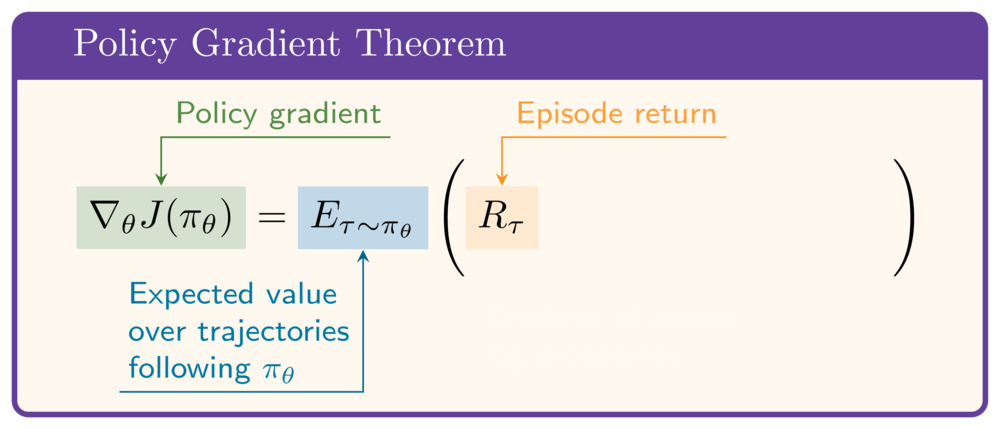
The policy gradient theorem
- Gives a tractable expression for $\nabla_\theta J(\pi_\theta)$
- Expectation over trajectories following $\pi_\theta$
- Collect trajectories and observe the returns
- For each trajectory: consider return $R_\tau$
- Multiply by the sum of gradients of log probabilities of selected actions
- Intuition: nudge theta in ways that increase probability of all actions taken in a 'good' episode
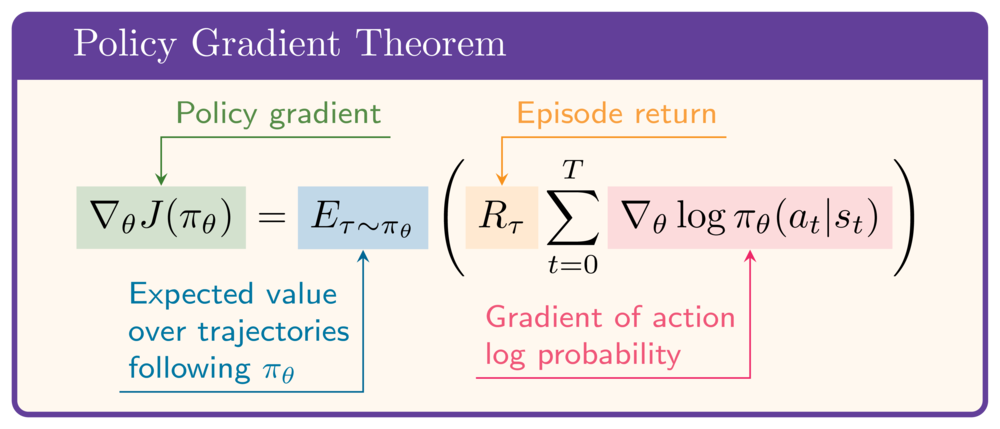

Let's practice!
Deep Reinforcement Learning in Python

